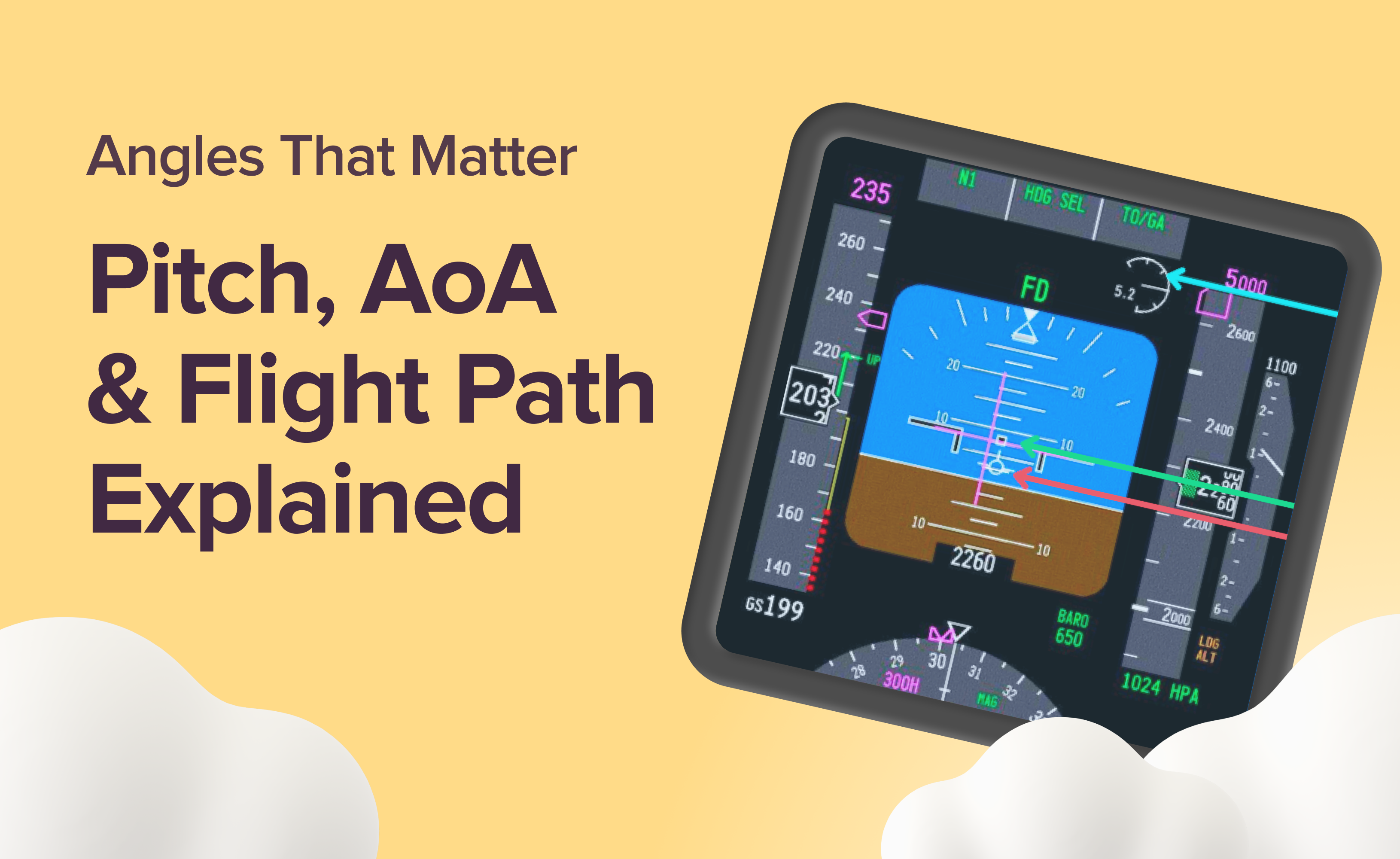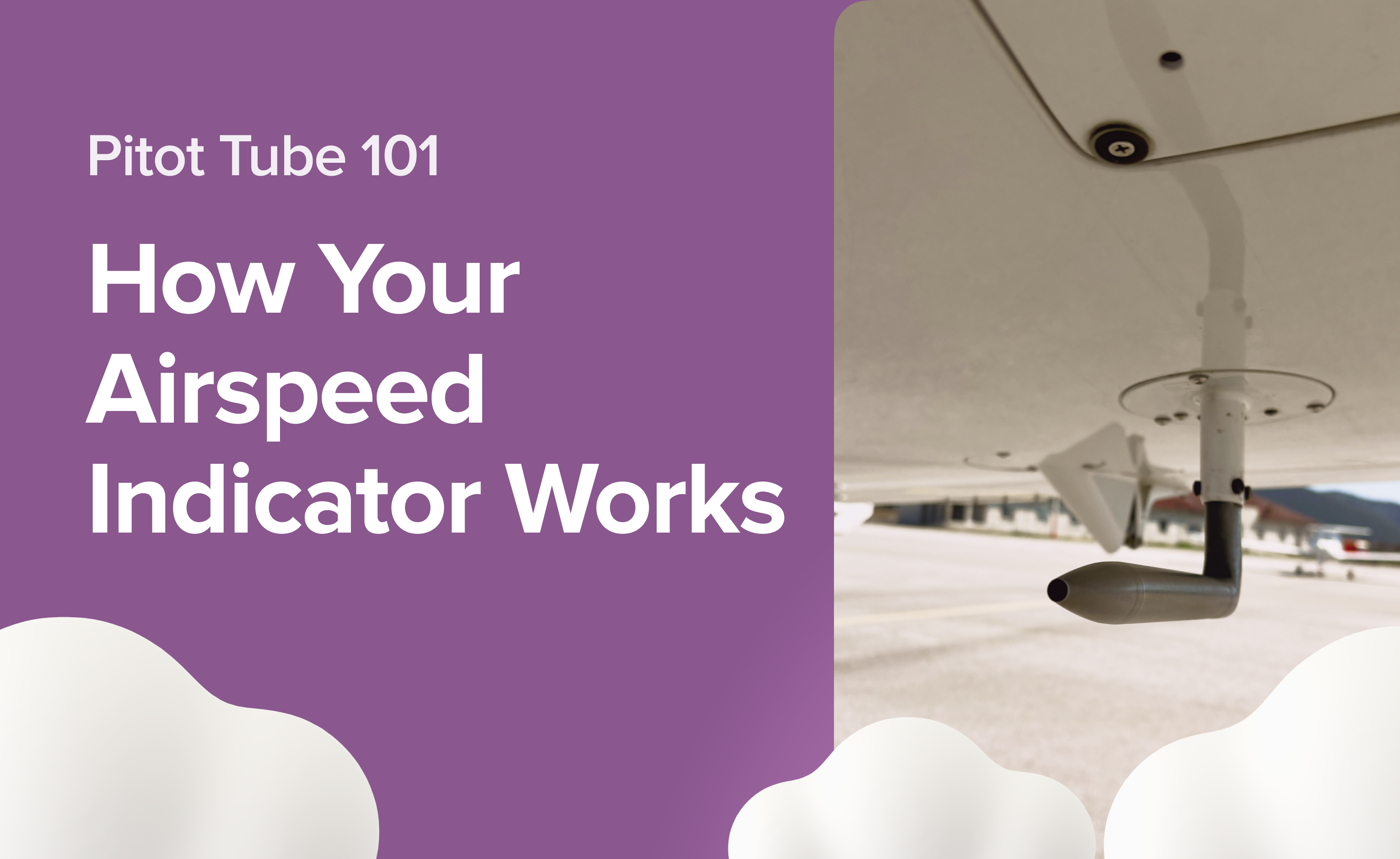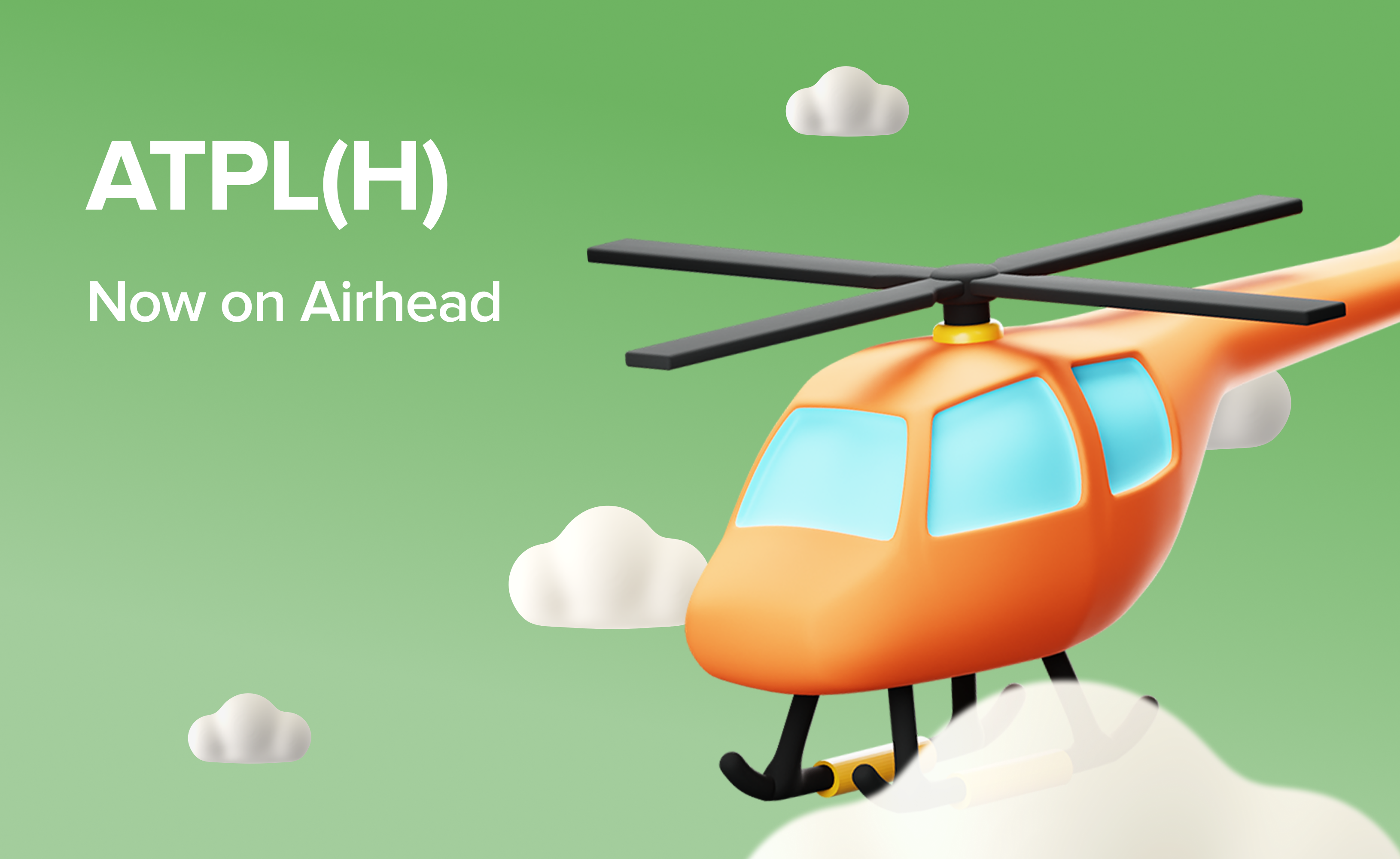Radio Navigation: 8 Latest ATPL Questions Explained

We’re diving into eight newly added ATPL questions from the ATPL Radio Navigation subject. In this walkthrough, you’ll see both the correct and incorrect answer options explained step by step, so you can strengthen your understanding of this essential area of aviation.
Prefer to watch instead of read? You can also follow along with the video version of this walkthrough for a more interactive experience. Let’s get started.
Subscribe to the AirheadATPL YouTube channel and hit the notification bell for weekly ATPL revision videos. Each video helps you tackle the latest challenging questions from all 13 ATPL subjects, straight from recent EASA ATPL exams.
Question 1: GPS Integrity Monitoring
Q AIR-249605: A flight is planned to Longyear Airport in Svalbard (78°15'N). Due to the high altitude, the aircraft GPS will NOT be able to achieve RAIM during the arrival phase, with too few satellites in view. If the aircraft is suitably equipped, which of the following could be used for integrity monitoring? AAIM means Aircraft Autonomous Integrity Monitoring.
AAIM using the IRS and barometric altimeter
AAIM using the VOR and DME
GBAS using DME only
GBAS using the INS and barometric altimeter
Correct Answer: AAIM using the IRS and barometric altimeter
Explanation: This question highlights the limitations of GPS in high-latitude environments. RAIM (Receiver Autonomous Integrity Monitoring) relies on a sufficient number of satellites, which may not be available in polar regions. In this scenario, the pilot needs an alternative to ensure navigation integrity.
AAIM (Aircraft Autonomous Integrity Monitoring) is an on-board system that uses the aircraft's own Inertial Reference Systems (IRS) or barometric systems to monitor navigation integrity. This makes it a reliable backup when RAIM is unavailable. Other options, such as ground-based (GBAS) or space-based (SBAS) systems, are either not on-board or may also be affected by a lack of satellite coverage.
Question 2: TVOR Beacons
Q AIR-249569: In the legend of a navigation chart, a beacon is mentioned to be a TVOR. Which description of the TVOR is correct?
A terminal VOR beacon used especially for aircraft on the final approach heading to the runway.
A VOR station that emitting a signal to test VOR indicators in an aircraft, and it is most commonly located at an aerodrome.
A VOR station with a shorter range used as part of the approach and departure structure at major aerodromes.
A conventional VOR beacon with an antenna that looks like a “T” due to the horizontal and perpendicular vertical parts.
Correct Answer: A VOR station with a shorter range used as part of the approach and departure structure at major aerodromes.
Explanation: VORs (VHF Omnidirectional Range) are classified by their signal strength and range, including High, Low, and Terminal VORs. A TVOR is a Terminal VOR, specifically designed for use in terminal areas like approaches and departures. Because its signal is weaker, it has a shorter range than high- or low-altitude VORs. This should not be confused with a VOT (Test VOR), which is used on the ground to test VOR indicators.
Question 3: LPV Approaches
Q AIR-249478: Which of the following options is correct for an LPV approach?
It is a radar precision approach available at military fields only.
It is a non-precision approach.
It is a precision approach.
It is a 2D Navigation approach.
Correct Answer: It is a precision approach.
Explanation: This is a tricky question due to evolving regulations. The traditional terms “precision” and “non-precision” are being replaced by 2D and 3D approach classifications. An LPV (Localizer Performance with Vertical Guidance) approach is a GPS-based approach that provides both lateral and vertical guidance. This makes it an APV (Approach with Vertical Guidance) or a 3D approach.
Although it is technically not a precision approach in the traditional sense, for the purpose of exams, an LPV approach can have minimums as low as a CAT I ILS (200 ft decision height). Therefore, it is often treated as equivalent to a precision approach in exam questions, but keep in mind that the terminology is a point of debate and regulatory change.
Question 4: ADF and QDR
Q AIR-250207: An aircraft has an ADF tuned to the KUS NDB as shown. What is the QDR for the KUS NDB?
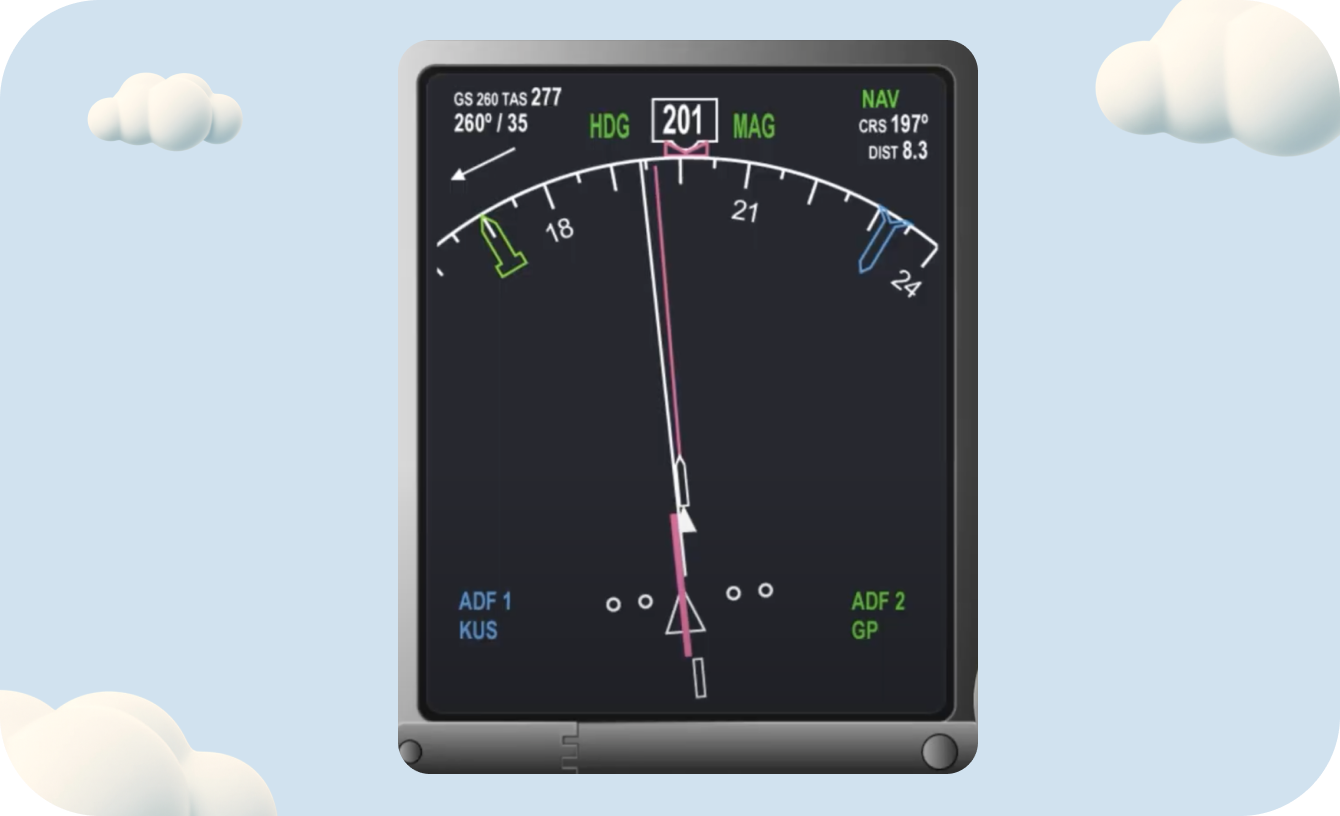
232°
170°
350°
052°
Correct Answer: 232° (or a very close value).
Explanation: This question requires you to interpret an ADF (Automatic Direction Finder) or RMI (Radio Magnetic Indicator) display. The key is to remember the definition of QDR and QDM:
QDR (Radial): The “from” bearing from the station.
QDM (Bearing): The “to” bearing to the station.
On an ADF needle, the tail of the needle always points to the QDR. The head (or arrow) of the needle points to the QDM. In the provided scenario, the tail of the needle points to approximately 232°, making this the correct QDR. If the question had asked for the QDM, you would take the reciprocal of 232°, which is 52°.
Question 5: RMI with a Fixed Card
Q AIR-250166: What is your magnetic bearing to the station?
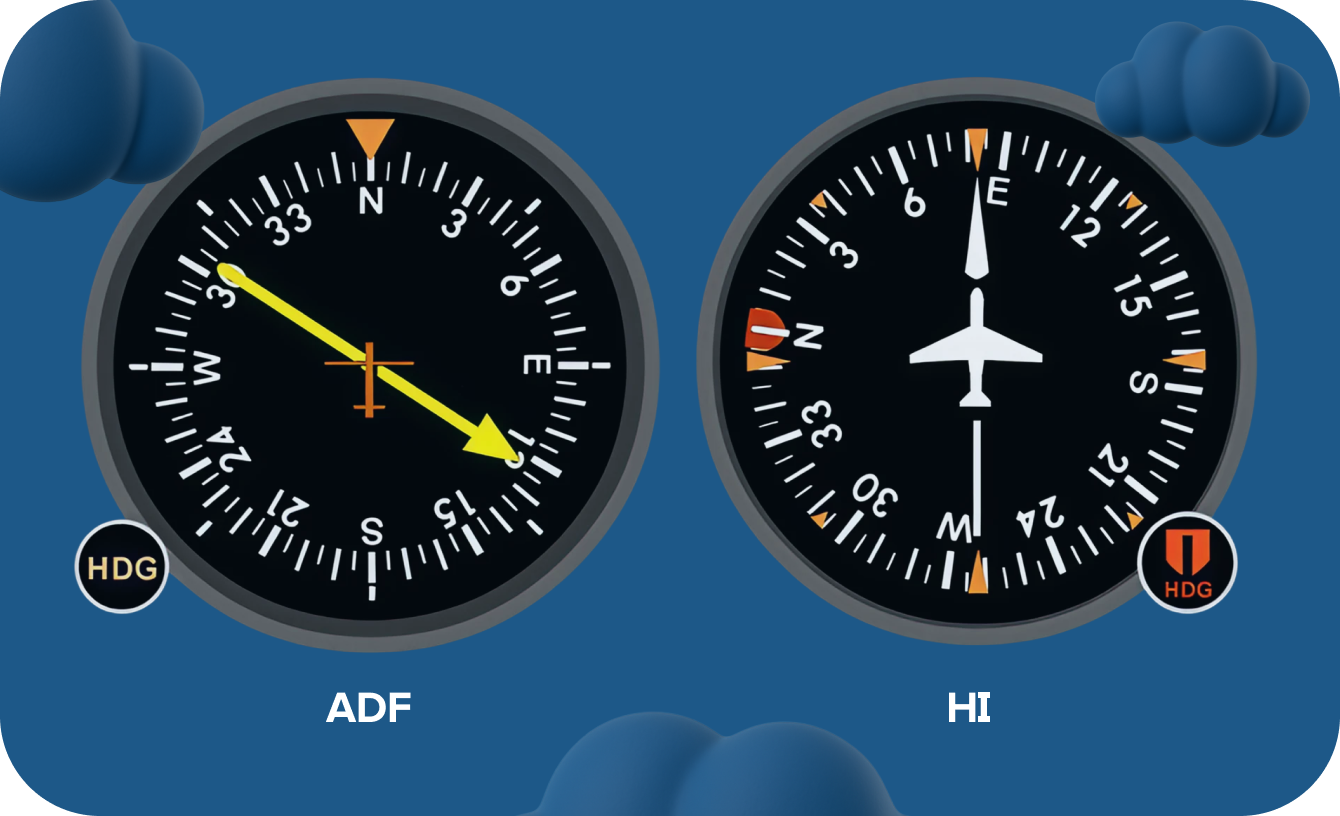
207°
030°
085°
265°
Correct Answer: 207° (or the closest option).
Explanation: This question tests your ability to read a fixed-card RMI, which is common in older or general aviation aircraft. Unlike a moving-card RMI where the compass rose rotates to align with your heading, a fixed-card RMI has a stationary compass rose.
To find your magnetic bearing to the station (QDM), you must mentally align the RMI's needle with your current heading. The needle's arrow will then indicate the bearing to the station. In this case, with a heading of 100°, the needle points to approximately 207° on the compass rose.
Question 6: VDF Range
Q AIR-250137: Which of the following affects VDF range?
Sky wave propagation.
Strength of the pilot's voice when transmitting.
The height of the transmitter and of the receiver.
Coastal refraction.
Correct Answer: The height of the transmitter and the receiver.
Explanation: VDF (VHF Direction Finding) determines a bearing using the aircraft's standard VHF radio transmissions. Because VHF operates on a high frequency, it is limited to line-of-sight propagation. This means that, like standard VHF radio communication, the range is directly affected by the height of both the transmitting aircraft and the receiving ground station. The higher the altitude of either, the greater the range. Other factors, like the strength of the voice or coastal refraction (which primarily impacts NDBs), are incorrect.
Question 7: GNSS Receiver Aerial Location
Q AIR-249357: What is the receiver aerial location of a GNSS system?
Left wing tip.
Top of the tail.
Bottom of the fuselage.
Top of the fuselage.
Correct Answer: On the top of the fuselage.
Explanation: GNSS (Global Navigation Satellite System) receivers rely on signals from satellites orbiting the Earth. For an antenna to have an unobstructed view of the sky, its most logical and effective placement is on the top of the fuselage. Antennas on the bottom, such as those for DME, typically receive signals from ground-based stations, which would be obscured by the fuselage.
Question 8: Intercepting a Localiser
Q AIR-249358: Refer to figure. Your current heading is 100°, and you are going to intercept the localiser with a course of 75° from the left and from below the glide slope.
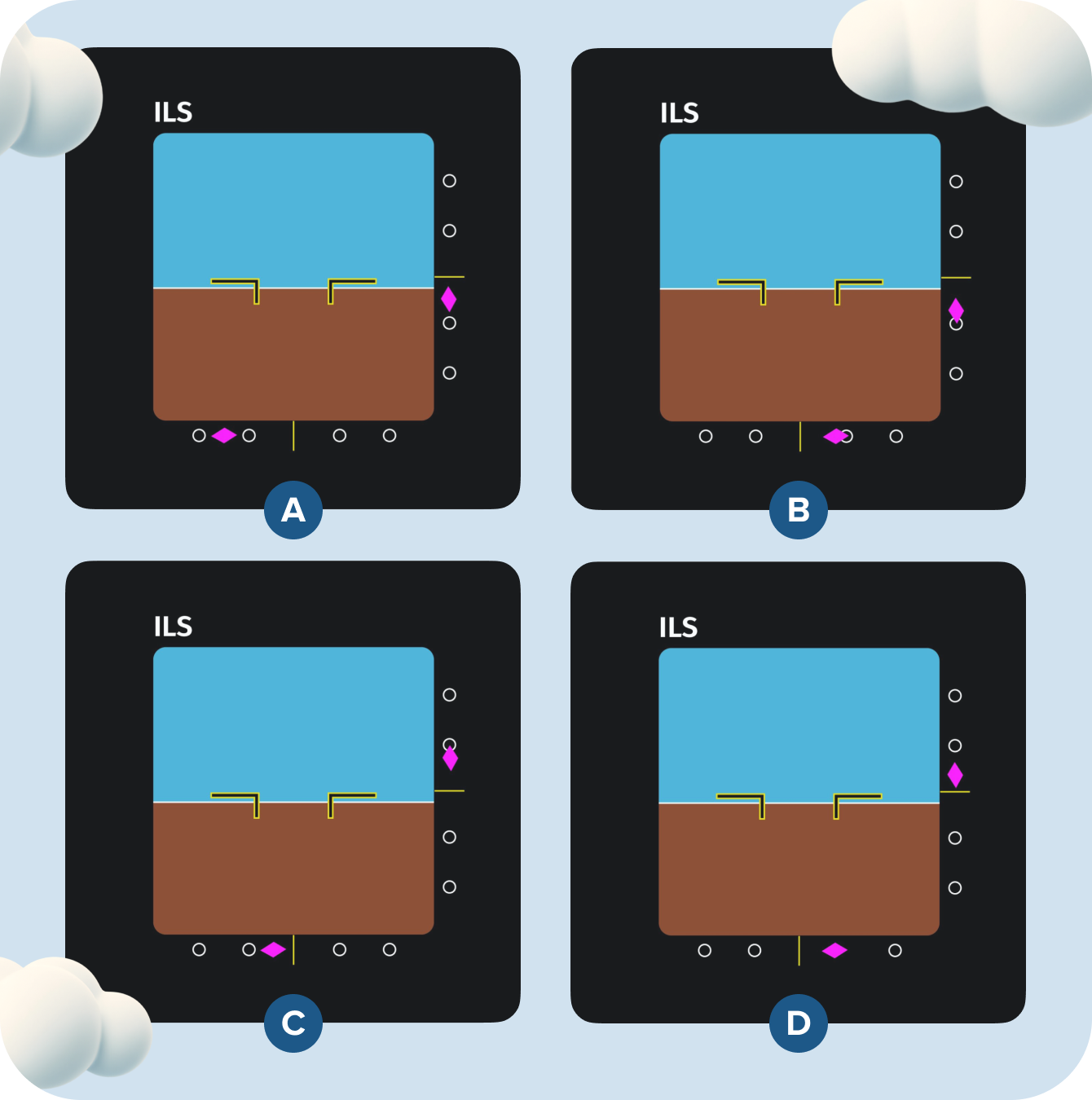
Figure A
Figure B
Figure C
Figure D
Correct Answer: Figure D. The PFD showing the glide slope diamond to the right of centre and the localiser diamond above centre.
Explanation: This question requires you to interpret a Primary Flight Display (PFD). On a PFD, the magenta diamonds represent the correct path. The aircraft is located relative to these diamonds.
Intercepting from the left: This means the localiser path is to your right. The magenta localiser diamond will be on the right side of the screen.
Intercepting from below: This means the glide slope path is above you. The magenta glide slope diamond will be above the centre of the screen.
Therefore, the correct PFD will show the localiser diamond to the right and the glide slope diamond above, indicating that you are to the left of and below the correct path.
Explore key subtopics & core concepts of the Radio Navigation Syllabus.

Prepare smarter with the Airhead Question Bank — the most up-to-date collection of ATPL exam questions from all subjects, regularly updated with the latest seen in real EASA exams.






